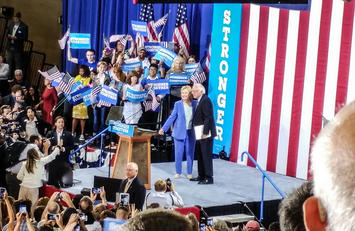
With President Donald Trump’s Dr. Demento impersonation undermining his own party, the road should be open for Democrats to sweep the next election cycle. And, for the first time since their horrific defeat of 2016, not only nationally but also in the states, the Democrats are slowly waking up to the reality that they need to go beyond the ritual Trump-bashing.
No one will compare the recently released “A Better Deal: Better Skills, Better Jobs, Better Wages” slogan to Franklin D. Roosevelt’s New Deal, or even Newt Gingrich’s “Contract for America.” One Bernie Sanders supporter called it “anodyne, focus-grouped, consultant-generated pablum.” Yet, at least it attempted to identify the party with something other than Trump hatred, which is all most Americans think the Democrats are all about.
The three Democratic parties
Before this new approach can work, Democrats need to decide what kind of party they are, or what coalition can bring them back into power. None of the present factions is strong enough, by themselves, to win consistently on a national basis; some accommodation between often opposing tendencies must be found. Finally, there needs to be a credible message that derives not from carefully orchestrated focus groups and surveys — the Hillary Clinton approach — but rather one that resonates with the very middle- and working-class voters that the party needs to win back.
Since the days of Franklin D. Roosevelt, the traditional Democratic Party has combined some degree of social moderation — albeit often too timid on issues related to gays and racial minorities — with a unifying message of economic growth, national security and upward mobility. Although business interests sometimes supported them, the old Democrats primarily directed their appeal to urban, and later suburban, middle- and working-class voters.
By the 1970s, many of these voters were headed rightward, as Democrats’ positions on social issues, defense and civil rights moved sharply to the left. Seeking to make up for some of the loss of some traditional FDR voters, Bill Clinton reoriented the party to include the rising class of information workers who were often socially liberal but fiscally conservative. But Clinton’s political genius and down-home image also helped Democrats retain some New Deal working-class support, even while forging stronger ties to tech companies, the rising professional class and Wall Street.
The third faction, the resurgent left, led by Sen. Bernie Sanders of Vermont, grew out of the clear failure of the second Democratic Party, led by its elite wing, to address the consequences of neoliberal economics, notably increased inequality, reduced social mobility and, to some extent, environmental degradation. To these activists, the Clintonian party is not much more than a light version of mainstream Republicanism.
Read the entire piece in The Orange County Register.
Joel Kotkin is executive editor of NewGeography.com. He is the Roger Hobbs Distinguished Fellow in Urban Studies at Chapman University and executive director of the Houston-based Center for Opportunity Urbanism. His newest book is The Human City: Urbanism for the rest of us. He is also author of The New Class Conflict, The City: A Global History, and The Next Hundred Million: America in 2050. He lives in Orange County, CA.
Photo by The Real Cloud2013, via Flickr, using CC License.












